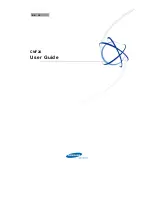
36
37
8.2.2 Seating shell interface
CAUTION
Improperly installed seating shell
Falling of the user due to improper assembly and incorrect settings
►
Note that the producer/distributor is responsible for the user's safety in case of using an individual seating
shell. In particular, the stability against tipping and the ergonomically correct sitting position of the user must
be verified. Ottobock assumes no liability in this regard.
►
Note that the producer / distributor is also responsible for passing on information on adaptation, operation
and care of the seating shell in case of using an individual seating shell. If you have questions, contact the
qualified personnel that provided the individual seating shell.
INFORMATION
►
Mounting on the outdoor mobility base and the function and operation of the foot support assembly option are
described in more detail in the instructions for use for the 647G250=* seating shell interface.
►
Operation when using the outdoor mobility base with a Kimba Neo seating unit is described in more detail in
the 647H893=* instructions for use.
The Kimba seating shell interface serves as the basis for individual seating shell fittings (see fig. 38). It is available
in various sizes and with the foot support assembly option.
The seating shell interface is firmly screwed to a seating system by qualified personnel. A claw mechanism makes it
easy to remove the seating unit/seating shell from the seat adapter on the outdoor mobility base.
Putting on the seating shell/seating unit
1) Place the seat with seating shell interface first onto the rear tube of the seat adapter at an angle of approxim
ately 45° (see fig. 39, item 1).
2) Press the front edge of the seat onto the mobility base until the retaining claw audibly snaps onto the front tube
of the seat adapter (see fig. 39, item 2).
3) Check that the seat and the mobility base are securely connected. You can do this, for example, by pulling
back the back support of the seat.
Removing the seating shell/seating unit
1) Pull the release lever located under the seat up (see fig. 39, item 2). The retaining claw will now release the
seat adapter.
2) Tip the seat with seating shell interface back at an angle of approx. 45° and then lift it up.
27
Kimba Neo, Kimba Cross, Kimba Inline
Use






































